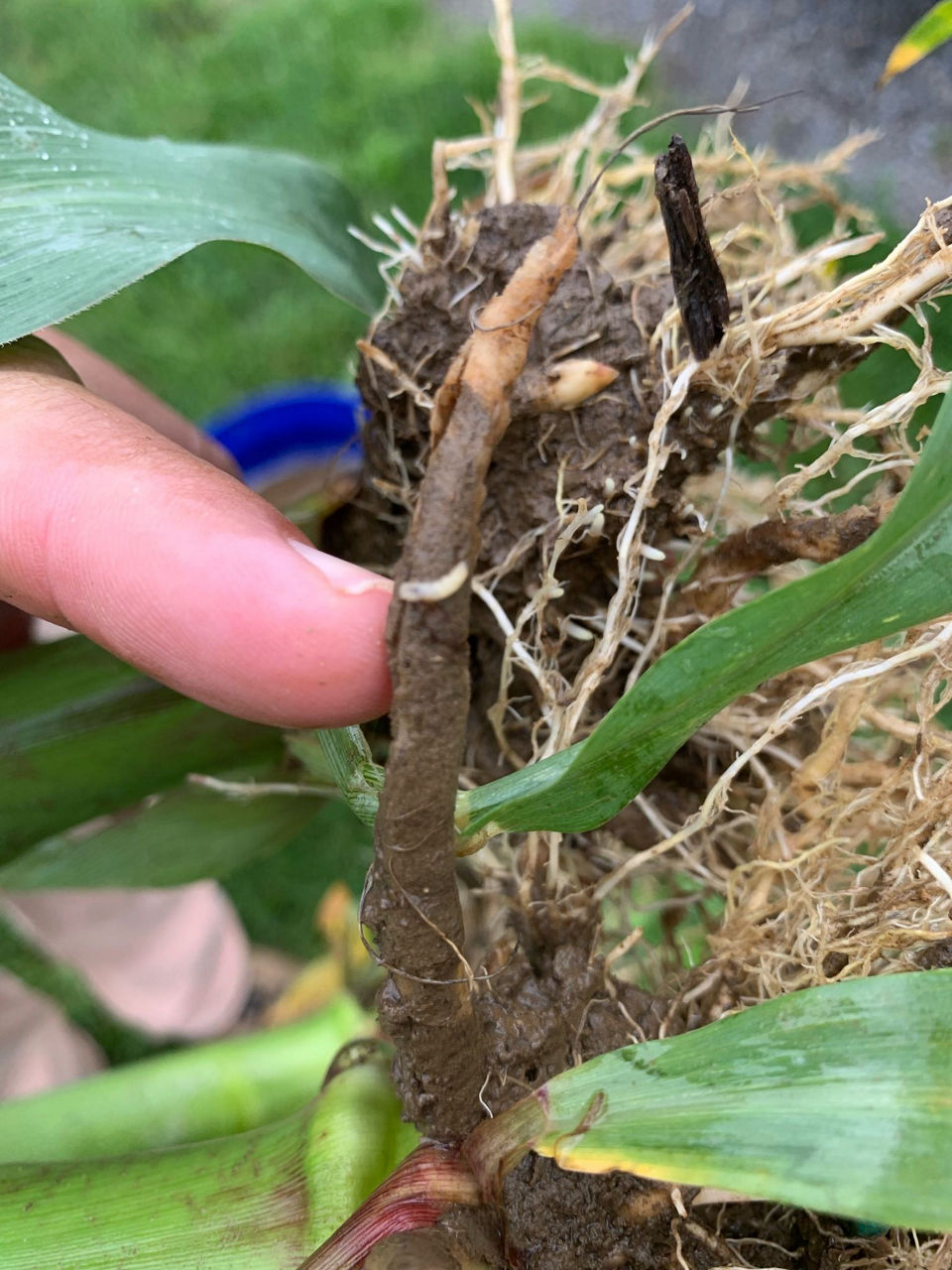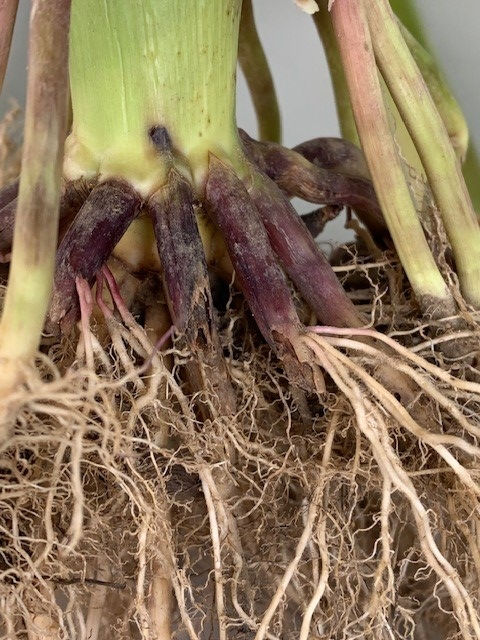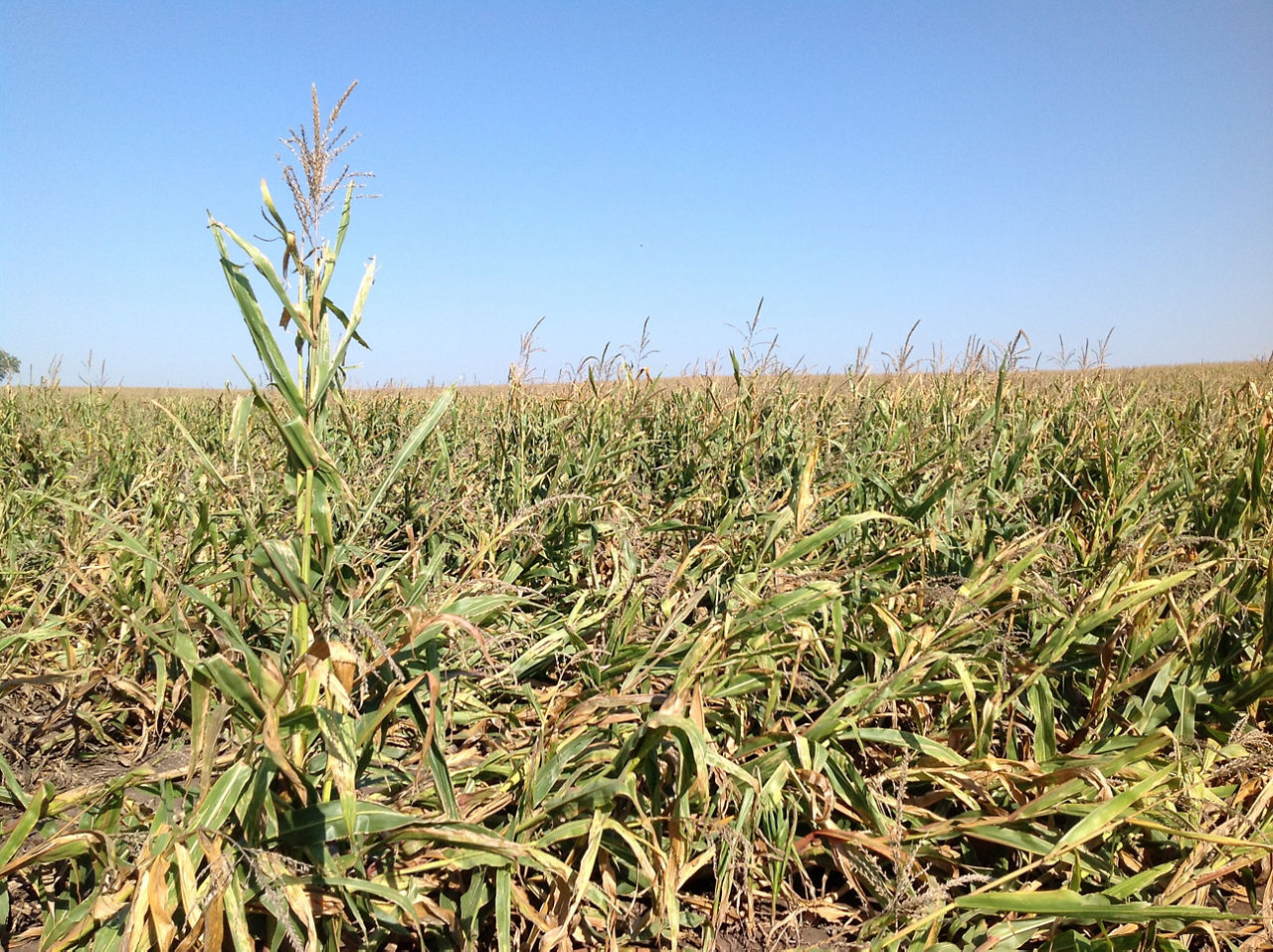7 MIN READ
Corn Root Worm Feeding and Damage in High Populations
October 11, 2023
The corn rootworm complex consisting of the western corn rootworm and the northern corn rootworm and occasionally the Mexican corn rootworm continues to be a major pest insect complex in the United States, particularly in the Corn Belt. It is estimated that the complex is responsible for a billion dollars annually in crop losses and control costs.1 Populations can fluctuate between years, with high populations followed by a year with relatively low populations complicating management.
Q. How can corn rootworms damage corn plants?
A. The larval stage is the most injurious stage as they feed on the root system (Figure 1). Newly hatched larvae, first instar, feed on root hairs and outer root tissue, later burrowing into the roots to feed. The major injury is caused by the second and third instar feeding on major roots including the brace roots. Corn rootworm damage to roots can appear as feeding scars, roots that appear tunneled into, or roots that are completely consumed to the to the base of the plant. The loss of root tissue restricts the plant’s ability to take up water and nutrients from the soil, which can have a direct impact on yield potential. Severe larval root feeding injury can result in up to 50 percent yield losses.1 Severe root injury can also result in lodging or “goosenecking” which can cause difficulty at harvest (Figure 2). Adults feeding on silks can reduce pollination, but this injury is considered minor in comparison to the injury by the larvae.



Q. Do the signs of CRW larval feeding vary according to whether the corn contains insect protection traits or not?
A. Yes, the typical symptoms of larval feeding are evident when digging up the roots of corn plants and assessing the amount of feeding damage present. In order to ingest the Bacillus thuringiensis (B.t.) proteins from insect traited plants, CRW larvae must feed on the roots, resulting in some injury being evident. Both the insect protected (traited) and the non-traited corn will show signs of CRW root feeding but can differ in the amount of injury. Corn with traits for insect resistance commonly show less root feeding from CRW than non-traited corn. As a result of less root feeding in insect resistant corn, the plants may look visibly healthier, less lodged, with less “goosenecking”.
Q. Does Bayer offer trait technology to help control CRW?
A. Yes, B.t. trait technology, which produces proteins in the corn plant that are toxic to specific species of insects, has helped provide root and yield protection benefits against CRW. Pyramiding (including 2 or more traits targeted against the same insect pest) is now considered a key management strategy for CRW control. SmartStax® Technology offers two proven modes of action against the corn rootworm complex. SmartStax® PRO with RNAi Technology (ribonucleic acid interference) that combines the proven benefits of SmartStax® Technology with an additional, RNA-interferon based mode of action, providing improved control over a range of pressure.
Q. What other management options should growers consider when faced with high CRW pressure?
A. Crop rotation to a non-host crop such as soybean, wheat, grain sorghum can be an effective management tool when dealing with high CRW population densities. Corn is the only known agronomic crop that allows either species to complete its life cycle. By rotating to soybean or another non-host crop, the food source that is essential for larval survival is removed, resulting in their death. However, this management tool may not be effective in areas where the either the NCR or WCR variant is common. In the case of the NCR variant, all the eggs do not hatch the year following corn, but hatch the following year, which in a two-year rotation would be corn, resulting in injury. In the case where this could be a concern, a traited product should be considered. In the case of the WCR variant, the female deposits eggs in soybean fields, which will hatch the following year, so again in this case if this is a concern, a traited product should be considered, the next growing season. The option is also available in areas where the variants occur is to extend the rotation to a three-year cycle, corn-soybean-wheat for example.
Another option is the use of soil-applied insecticides at planting with a non CRW traited product.
Q. How can growers monitor CRW pressure and help manage CRW in the future?
A. Regardless of management practices used, every grower should be sampling and scouting to assess the level of CRW pressure in their fields as well as to help determine the success of their current management plan. Yellow sticky traps can be used to help monitor adult beetle populations to determine if they should implement a corn rootworm management plan in their fields the following year. Growers may also choose to control adult CRW beetles prior to egg lay with foliar insecticide applications. Timely applications can help reduce egg laying which can result in lower pressure the following year.
For further information on scouting and management strategies, please see: Management of the Corn Rootworm Complex.
Sources:
1Calles-Torrez, V., Knodel, J., and Boetel, M. 2020. Integrated Pest Management of Corn Rootworms in North Dakota. North Dakota State University. E1852. https://www.ndsu.edu/agriculture/ag-hub/publications/integrated-pest-management-corn-rootworms-north-dakota
Calvin, D. 2017. Western and northern corn rootworm management in Pennsylvania. Penn State Extension. www.extension.psu.edu
Head, G.P., Carroll, M.W., Evans, S.P., Rule, D.M., Willse, A.R., Clark, T.L., Storer, N.P., Flannagan, R.D., Samuel, L.W., and Meinke, L.J. 2017. Evaluation of SmartStax and SmartStax PRO maize against western corn rootworm and northern corn rootworm: efficacy and resistance management. Pest Management Science vol. 73(9):1883-1899.
Potter, B. 2022. Can you manage your way out of corn rootworm problems? It's complicated! University of Minnesota. https://blog-crop-news.extension.umn.edu/2022/04/can-you-manage-your-way-out-of-corn_20.html
1215_140497
Seed Brands & Traits
Crop Protection
Disclaimer
Always read and follow pesticide label directions, insect resistance management requirements (where applicable), and grain marketing and all other stewardship practices.
©2024 Bayer Group. All rights reserved.